Google Pixel 9 vs. OnePlus 12: It's all about priorities
Do you need the best hardware or latest AI features?
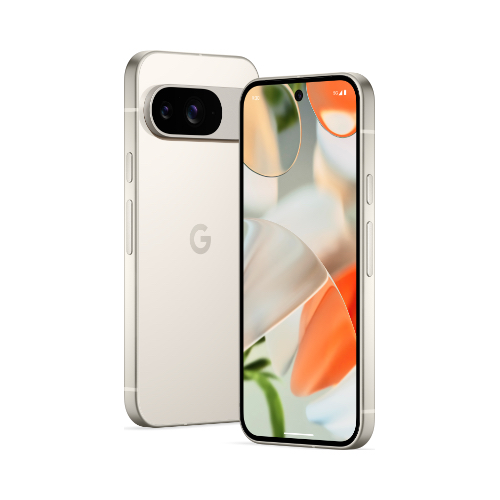
The best AI phone
The Pixel 9 has an all-new design that mimics the iPhone, and while I'm not entirely sold on the new aesthetic, I will admit that the build quality is better than previous years. The cameras have also been upgraded, and take some of the best photos and videos in this category. But the biggest reason to get the Pixel 9 is the software; Google has a suite of AI features on the device, and they're amazing. The phone still isn't good at gaming, and the battery doesn't last as long, but if you need the best AI features right now, the Pixel 9 is the obvious choice.
Pros
- Better design and build quality
- Bright OLED panel
- Outstanding cameras
- Clean software with class-leading AI
- Seven years of software updates
Cons
- Costly
- Tensor G4 still isn't good at gaming
- Overheating issues
- No charger in the box
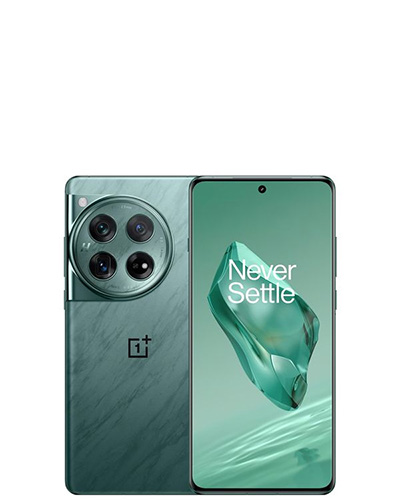
A good all-rounder
The OnePlus 12 doesn't have anywhere close to the same level of AI tech as the Pixel 9. Having said that, it has much better hardware; the screen gets brighter, the battery lasts longer and charges at 100W, and it is much better at gaming. The cameras are noticeably better, and they're close to the Pixel 9. If you don't see yourself using AI as much and instead need a powerful phone with a better overall value, the OnePlus 12 is my recommendation.
Pros
- Sublime 120Hz AMOLED panel
- One of the best hardware packages
- Standout cameras
- Long-lasting battery with 100W charging tech
Cons
- Won't pick up as many software updates
- No IP68 dust and water resistance
Google Pixel 9 vs. OnePlus 12: Design
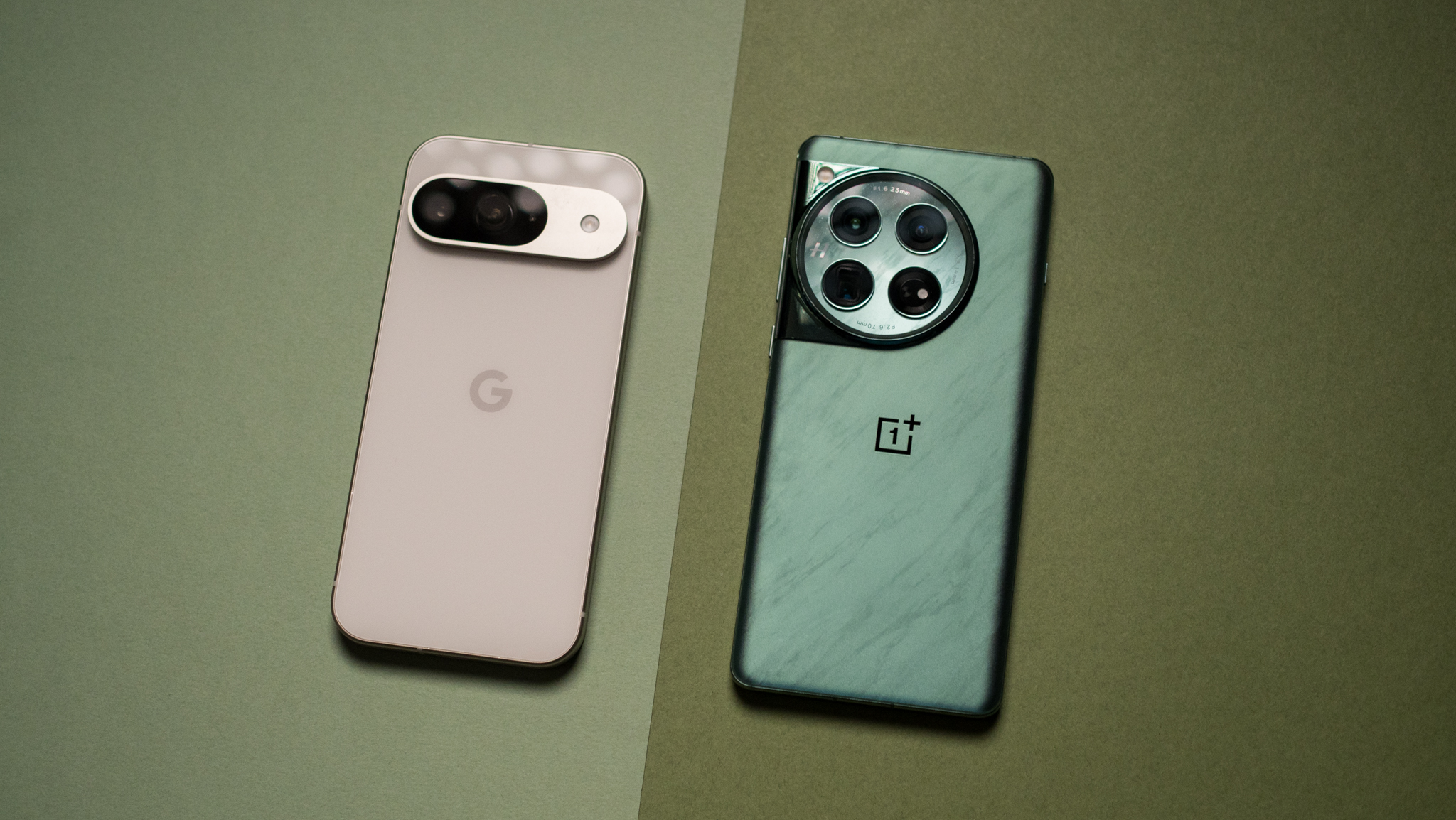
I tend to use Pixels quite a bit over the course of the year, and these devices stood out thanks to the distinctive camera bar at the back. With the Pixel 9 generation, Google is making wholesale changes to the design; the camera bar is still intact, but it doesn't blend seamlessly into the mid-frame, and the sides of the phone are now flat.
If anything, the new design makes the Pixel 9 look like the iPhone 15; I'm not a fan of the design tweaks, but I will admit that the Pixel 9 has better build quality than its predecessors. The phone doesn't have any flex to the chassis, the buttons have good tactility, and it has good durability — something that was a big problem on previous Pixels.

The OnePlus 12, meanwhile, retains the same design language as its predecessors, offering a svelte design with smooth curves and rounded edges. The Flowy Emerald option looks stunning, and it is still the best color variant available. The matte texture at the back is delightful, and although the device is bulkier than the Pixel 9 at 9.2mm (versus 8.5mm), you don't feel that in regular use. OnePlus rolled out the Glacial White model of the device a few months ago, and that's another variant to consider if you want an elegant design.

I also like the camera housing on the OnePlus 12; the individual rings around the cameras and the seamless way the island merges into the mid-frame is pretty cool. Other design niceties include the alert slider, a hardware toggle that lets you switch between ring, vibrate, and silent modes.

While OnePlus clearly got a lot right on the design side of things, the OnePlus 12 misses out on IP68 dust and water resistance — the phone instead gets an IP65 rating, and that just isn't enough in 2024. Thankfully, the Pixel 9 isn't limited in this area, and the device gets IP68 ingress protection.
The Pixel 9 is thinner, lighter, and smaller, and while small Android phones aren't really a thing these days, it is on the smaller end of the scale. So if that's a consideration, the Pixel 9 could be a better choice. On the whole though, I prefer the design of the OnePlus 12, with the device managing to deliver an evocative design that looks elegant.
Google Pixel 9 vs. OnePlus 12: Display
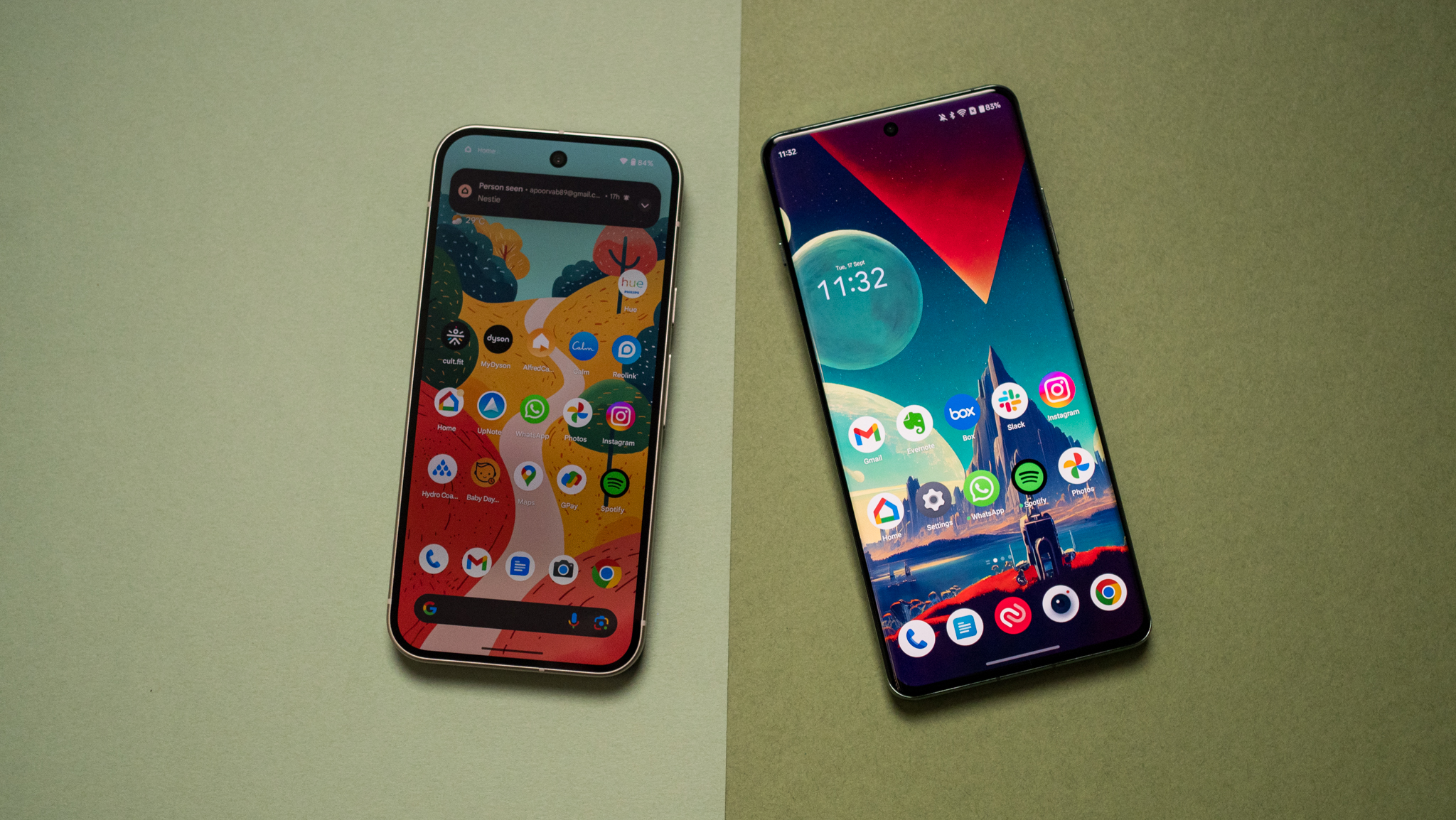
The Pixel 9 has a 6.3-inch 120Hz OLED panel, and while it isn't quite as diminutive as the Zenfone 10, it is a compact device. The panel now goes up to 2700 nits in HDR mode, but the real difference is in daily use, where it has a clear edge over the Pixel 8 — both with regards to brightness and color vibrancy.
Get the latest news from Android Central, your trusted companion in the world of Android
Google did all the right things in this area, and while some issues remain — the ambient light sensor isn't quite as fast to alter brightness when moving to a room with low lighting — the Pixel 9 is a much better showing than previous years. You also get Gorilla Glass Victus 2, and I didn't run into many problems in the month I used the device.
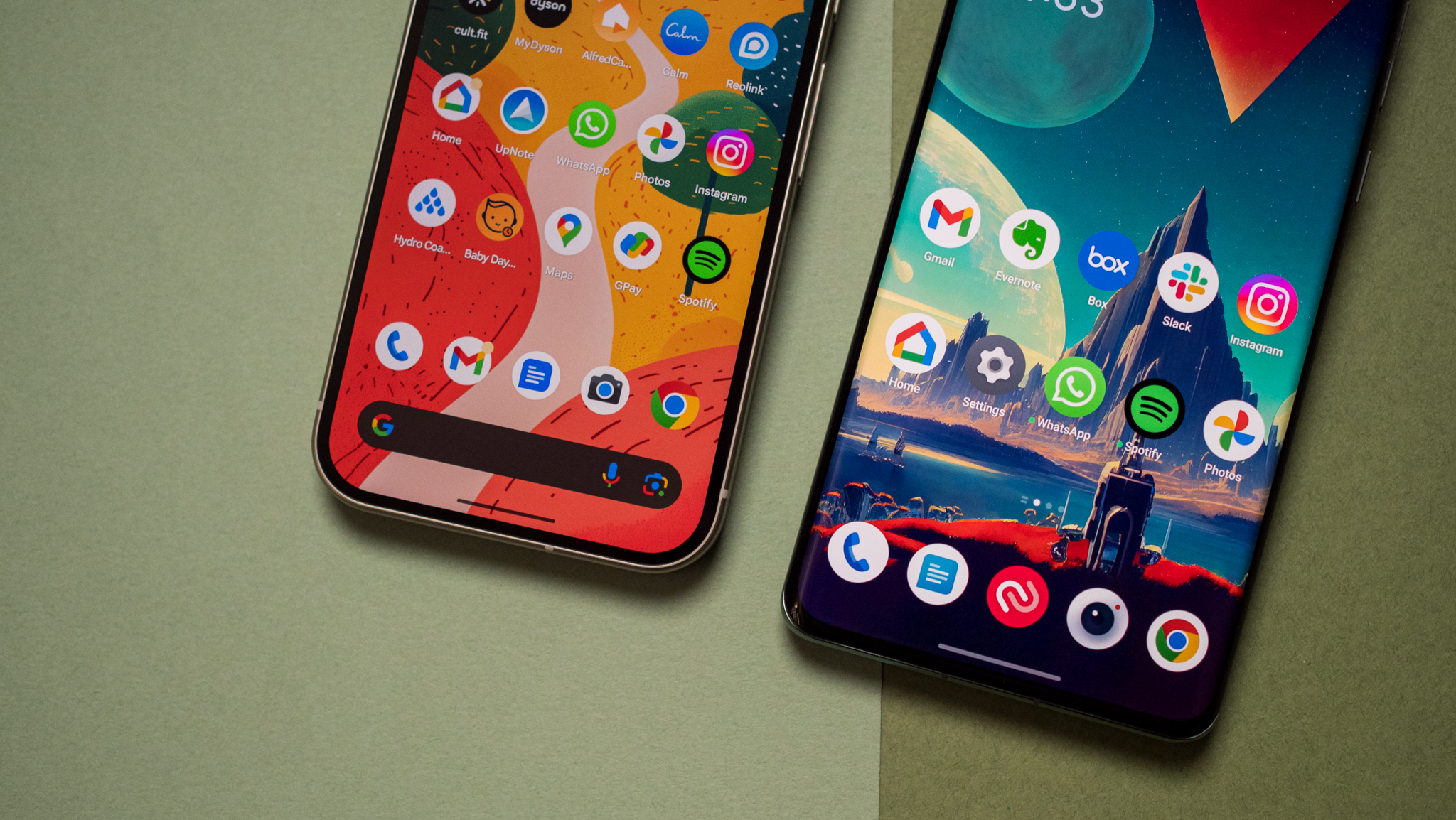
The OnePlus 12 doesn't have a bad showing either; the phone's 6.82-inch 120Hz AMOLED panel is one of the best around, and it has better PWM dimming — something that's still a problem on Pixels — along with great color saturation. The 4500-nit max brightness figure is a bit of a gimmick as it measures miniscule portions of the panel when viewing HDR content, but I didn't see any issues with the panel even under harsh sunlight.
However, the Pixel 9 wins this round, with the phone managing to get noticeably brighter in auto mode. Google did a terrific job tuning the panel this time around, and the Pixel 9 — along with the 9 Pro XL — has one of the brightest OLED panels in the industry.
Google Pixel 9 vs. OnePlus 12: Hardware
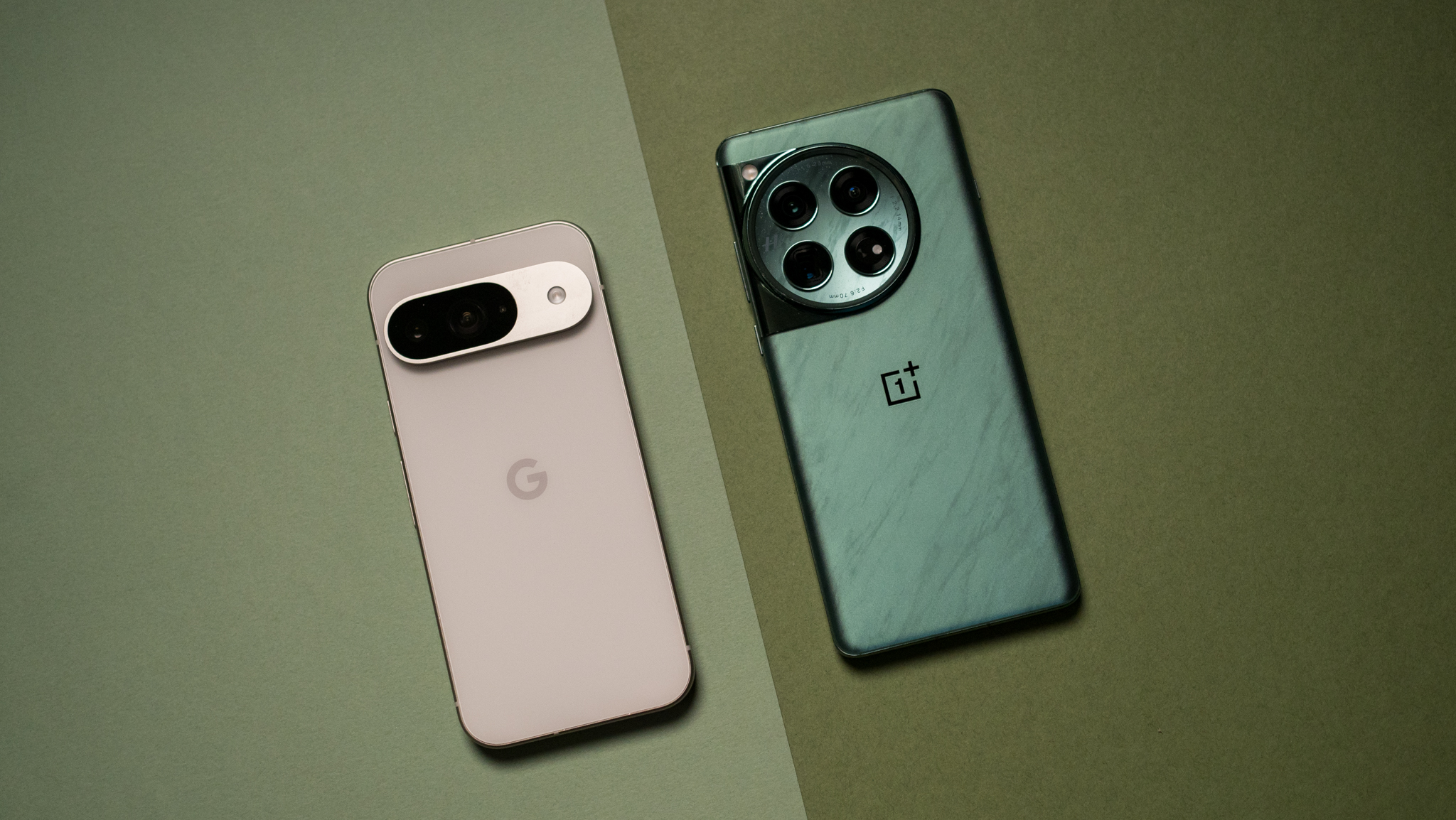
Google doesn't have the best hardware, and that hasn't changed with the Pixel 9. The phone is powered by the Tensor G4, but it doesn't have any meaningful upgrades over the G3 — if anything, it throttles sooner in games. You now get 12GB of RAM as standard, and while that is good to see, the base model is limited to just 128GB of storage, and that isn't enough.
You'll need to shell out an additional $100 to get the 256GB model, and regardless of whatever variant you choose, you get the older UFS 3.1 storage and not UFS 4.0. While the cellular modem is better than previous years, it doesn't quite manage to deliver the same bandwidth as Qualcomm-powered devices.
The OnePlus 12, thankfully, doesn't have such limitations. The phone continues to have one of the best hardware packages around, and it is a delight to use. The Snapdragon 8 Gen 3 is fantastic in regular use, and it holds up incredibly well even in extended gaming sessions. The phone has 12GB of RAM and 256GB of UFS 4.0 storage as standard, and there's a 16GB/512GB model if you need additional storage.
| Category | Google Pixel 9 | OnePlus 12 |
|---|---|---|
| OS | Android 14, seven software updates | Android 14, four software updates |
| Display | 6.3-inch 120Hz Actua OLED, 2424x1080, HDR, Gorilla Glass Victus 2, 2700 nits max | 6.82-inch 120Hz LTPO AMOLED (3168x1440), HDR10+, Dolby Vision, 1,600 nits (HBM), 4,500 nits (HDR), Gorilla Glass Victus 2 |
| Chipset | Google Tensor G4, Titan M2, 4nm | Snapdragon 8 Gen 3, Adreno 750, 4nm |
| RAM | 12GB | 12GB/16GB LPDDR5X |
| Storage | 128GB/256GB UFS 3.1 | 256GB/512GB UFS 4.0 |
| Rear camera 1 | 50MP f/1.68 1/1.31-inch module, 82-degree FoV, OIS | 50MP f/1.6 Sony LYT-808, 1/1.4-inch sensor, 23mm focal length, OIS, 8K at 30fps |
| Rear camera 2 | 48MP f/1.7 1/2.55-inch module, wide-angle, 123-degree FoV | 64MP f/2.6 OmniVision OV64B telephoto, 1/2-inch sensor, 70mm to 140mm focal length, 3x optical zoom, 6x in-sensor zoom, 120x digital zoom, OIS |
| Rear camera 3 | ❌ | 48MP f/2.2 Sony IMX581 wide-angle, 1/2-inch sensor, 14mm focal length, 114-degree FoV |
| Front camera | 10.5MP f2.2, autofocus, 95-degree FoV | 32MP f/2.4 Sony IMX615, 1/2.74-inch sensor, 21mm focal length |
| Ingress protection | IP68 dust and water resistance | IP65 dust and water resistance |
| Connectivity | Global 5G, Satellite SOS (U.S.), Wi-Fi 7, Wi-Fi 6 (India), Bluetooth 5.3, NFC | Wi-Fi 7, Sub-6 5G bands, NFC, Bluetooth 5.4 |
| Security | Ultra-sonic fingerprint sensor | Optical fingerprint sensor |
| Audio | USB-C, stereo sound | USB-C, stereo sound, 32-bit/384KHz, AptX HD, AptX, LDAC, LHDC, AAC, SBC |
| Battery | 4700mAh battery, 45W charging, 10W wireless charging | 5400mAh battery, 100W SuperVOOC, 50W AirVOOC wireless charging |
| Dimensions | 152.8 x 72.0 x 8.5mm, 198g | 164.3 x 75.8 x 9.1mm, 220g |
| Colors | Obsidian, Porcelain, Wintergreen, Peony | Flowy Emerald, Silky Black, Glacial White |
You also get a massive 5400mAh battery, and it manages to last up to two days between charges with medium use. Even if you push the phone, you'll get a day and a half worth of use before you need to charge it. And on that front, 100W charging tech ensures the battery charges in under 45 minutes.
The Pixel 9 lasts up to a day with relative ease, but the 4700mAh battery doesn't have anywhere close to the same longevity as the OnePlus 12. The charging situation isn't as good either, with the device limited to 27W. Like previous years, you don't get a charger in the box, so you will need to use a USB PD charger.
In daily use, the OnePlus 12 is the obvious choice if you need a powerful phone that's built for gaming. The device has much better fluidity and handles demanding games with ease, and there are no slowdowns. The Pixel 9 isn't quite on the same level, and it throttles early in demanding games, introducing lag. While overheating isn't as big a problem as last year, the phone tends to throttle quickly.
Google Pixel 9 vs. OnePlus 12: Cameras
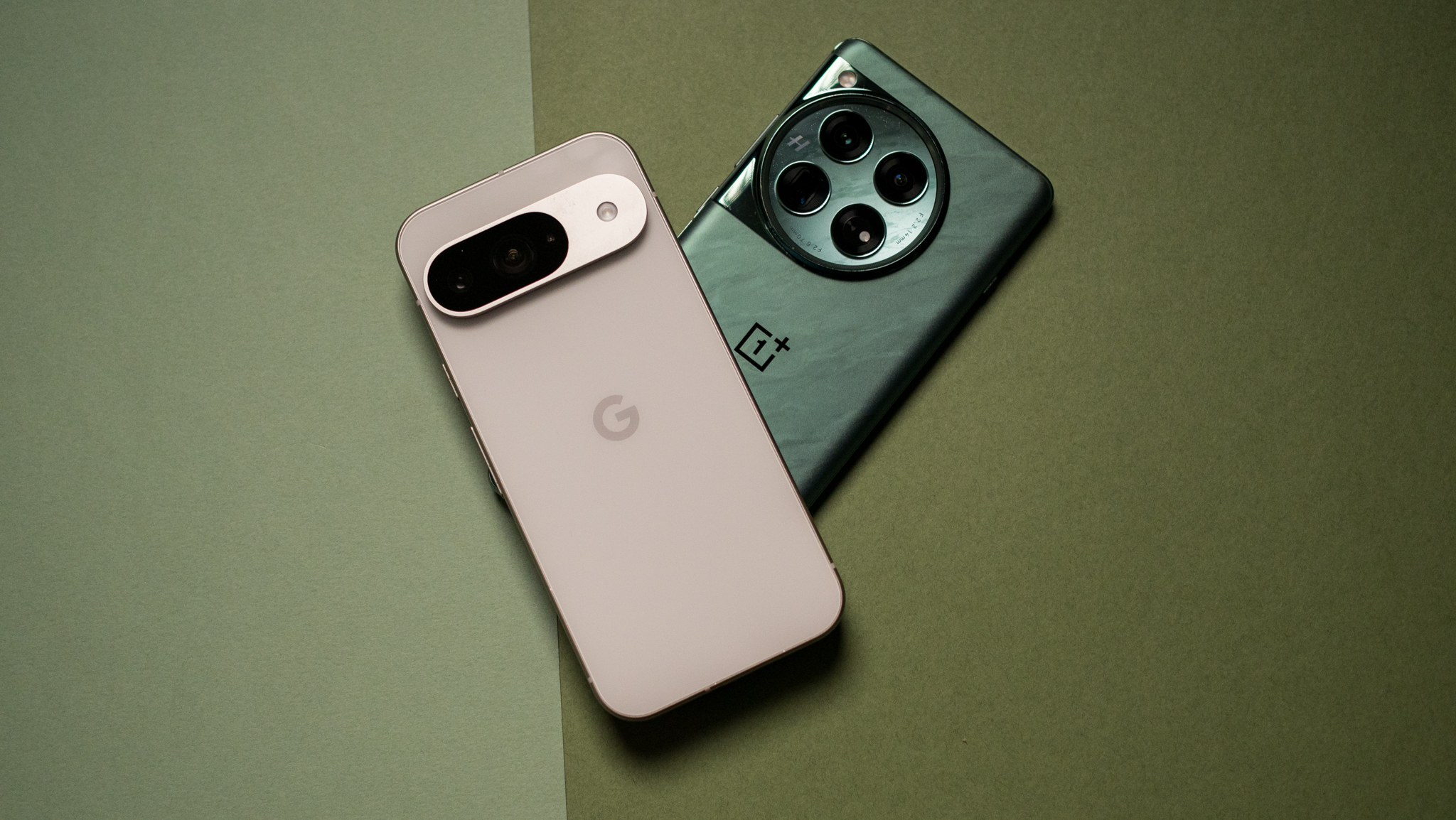
The Pixel 9 has a new 50MP main camera at the back, and it's joined by a 48MP wide-angle lens. You don't get a dedicated zoom lens, but the main camera doubles as a 2x shooter, and you get detailed shots. While the camera hardware isn't the best by a long shot, Google has a tendency to deliver stellar photos by leveraging its software skillset.
The OnePlus 12 has better camera hardware, with the device touting a 50MP main camera, 64MP 3x zoom lens with OIS, and a 48MP wide-angle lens. It has Hasselblad tuning, 4K60 video on all back cameras, and the ability to shoot Dolby Vision footage. There's an action mode that does a good job with moving objects, Lens integration, and interesting shooting modes.
Google had a sizeable lead in this area in the past, but that isn't the case in 2024. If anything, the OnePlus 12 does a slightly better job in low-light scenarios, delivering photos with saturated colors and good detail. The Pixel 9 is still the most consistent camera around, and it is fantastic with moving objects.
It's clear that Google needs to update its camera hardware, and while it is able to deliver remarkable results with its software tuning, it is starting to lag behind its rivals. The OnePlus 12 has a versatile camera system, and it takes photos that are just as good.
Google Pixel 9 vs. OnePlus 12: Software
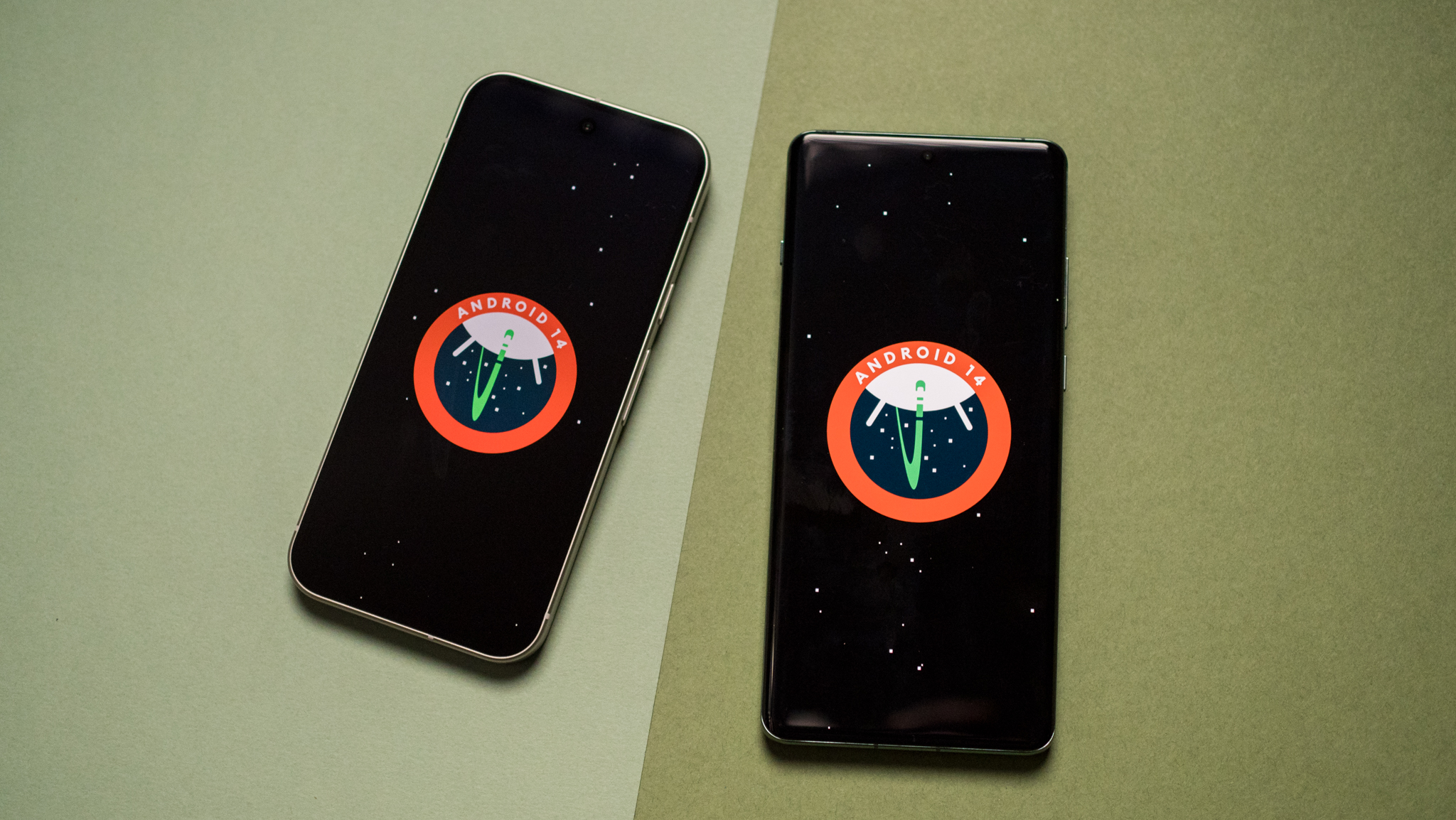
The main reason I use Pixels is because of the software. Google offers a clean software with zero bloatware, and the Material You interface is colorful and customizable. A big talking point with the Pixel 9 is AI, and Google is rolling out a slate of features in this area. Add Me is my favorite feature, with the feature designed to make group shots fun.
Pixel Studio allows you to create images using generative AI, and it does a decent enough job in its own right. The new weather widget uses AI to provide a summary of the day's weather, and Pixel Screenshots does a great job organizing screenshots and making them searchable.
The new AI additions join the likes of Magic Eraser, Recorder, and all the other mainstays on previous Pixel devices, and honestly, if you're interested in trying out mobile AI, there isn't a better choice. Google has a clear lead in this area, and other manufacturers are partnering with the brand to bring some of these AI utilities to their devices.
Obviously, you don't get much in the way of AI on the OnePlus 12, but the device has a decent set of features that are highly customizable. I like the fluidity of the interface, but there is bloatware, and at least in my own use, it isn't as enjoyable as the Pixel 9.
Google has a distinct advantage when it comes to software updates as well, with the Pixel 9 guaranteeing seven Android OS updates. The OnePlus 12, meanwhile, will get four Android OS updates as standard, and while that is on par with most other devices, it doesn't measure up to the Pixel 9.
Google Pixel 9 vs. OnePlus 12: Which should you buy?
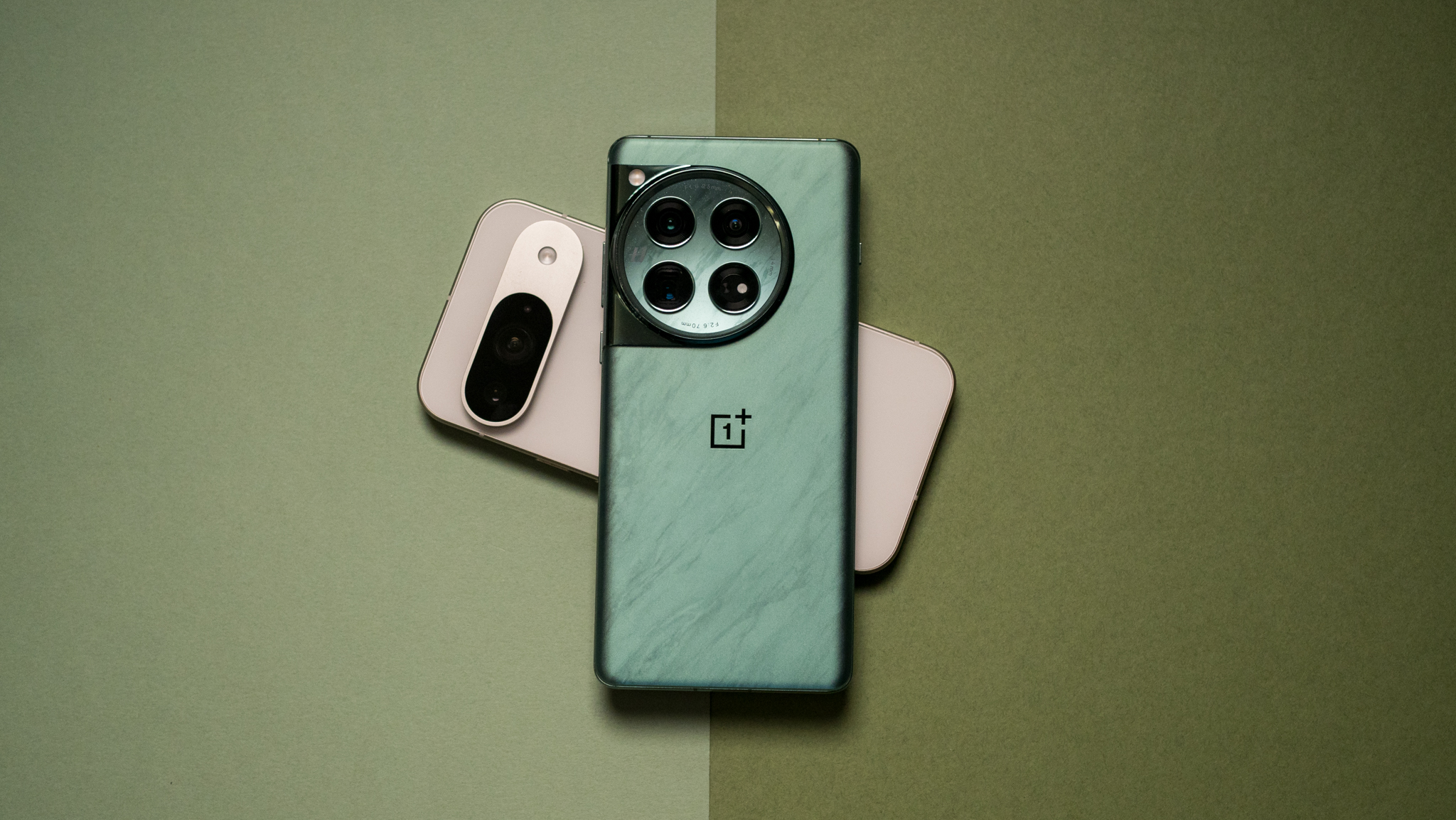
With the Pixel 9, Google has cemented its AI dominance; Gemini Live, Pixel Studio, Add Me, and the slate of AI-assisted features available on the device give it a distinct edge. The design is better than last year, the OLED panel is significantly brighter, and the cameras continue to be amazing.
However, the 256GB model of the Pixel 9 costs $899, and it isn't quite as enticing an value. By contrast, the 12GB/256GB version of the OnePlus 12 is available for $699 in the U.S., and that is a better deal when you consider the hardware you're getting. You are getting better software and long-term updates on the Pixel 9, but the hardware isn't as powerful, and there isn't as wide a gulf when it comes to the cameras as previous years.
There's a similar difference in other regions; the OnePlus 12 is available for ₹64,999 ($774) in India, and you can get the 256GB Pixel 9 at ₹79,999 ($953) in the country. As much as I like the Pixel 9, I don't think it is as good a value at the moment, and if you need all the AI-focused features, you should wait for the device to go on sale — Google usually offers exciting discounts on its phones during the holiday season, and that should be the case this time as well.
If you don't need the AI utilities and want a powerful phone with plenty of customizability, the OnePlus 12 is a better choice. The cameras are outstanding, you get a bigger battery and significantly faster charging, and it's the obvious choice if you're interested in mobile gaming.

The best AI phone
Interested in trying out what's possible with AI today? Then you'll need the Pixel 9. What it lacks in the hardware it more than makes up for via exclusive AI features.

A good all-rounder
The OnePlus 12 may not have much in the way of AI software, but if you need powerful hardware and versatile cameras, it is the better choice.

Harish Jonnalagadda is Android Central's Senior Editor overseeing mobile coverage. In his current role, he leads the site's coverage of Chinese phone brands, networking products, and AV gear. He has been testing phones for over a decade, and has extensive experience in mobile hardware and the global semiconductor industry. Contact him on Twitter at @chunkynerd.
You must confirm your public display name before commenting
Please logout and then login again, you will then be prompted to enter your display name.
